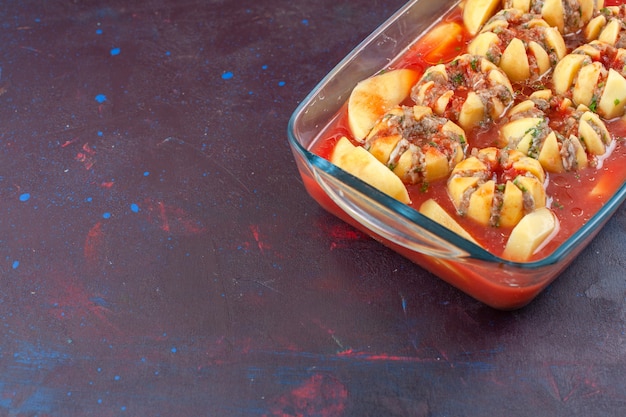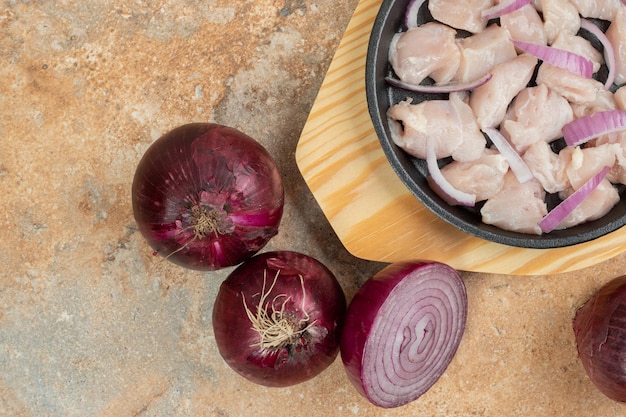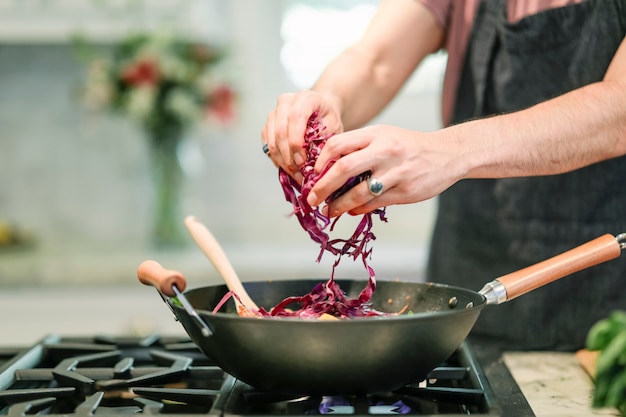Let's face it, we all have those tried and true recipes that never fail to deliver a satisfying meal. Whether it's a comforting casserole, a crowd-pleasing pasta dish, or a decadent dessert, we have our go-to culinary heroes. For me, one of those unwavering champions is oven-roasted beets.
Now, I know what you might be thinking: beets? Really? But trust me on this one. Oven-roasted beets are a revelation! They're sweet, earthy, and incredibly versatile. They're a delight enjoyed on their own, tossed into salads, or used as the base for delicious dips and spreads. And the best part? They're incredibly easy to make.
I remember the first time I truly discovered the magic of roasted beets. It was a sunny afternoon at the farmers market, and I was mesmerized by the vibrant colors of the fresh produce. A vibrant bunch of ruby-red beets caught my eye, their smooth, firm skin gleaming in the sunlight. Something about them just called to me, and I knew I had to take them home.
That evening, I followed a simple recipe I found online, and the result was pure culinary bliss. The beets had softened to a tender sweetness, their earthy flavor intensified by the roasting process. I was hooked! Ever since that day, roasted beets have become a regular fixture in my kitchen, and I'm always eager to share my love for this humble root vegetable with anyone willing to give it a try.
(Part 1) Why I Love Roasted Beets

There's a certain magic to roasted beets that goes beyond their simple preparation. It's not just about the flavor, although that's a big part of it. Roasted beets offer a unique combination of benefits that make them a winning choice for any meal.
1. Versatility in the Kitchen
Roasted beets are a culinary chameleon, adapting effortlessly to a wide range of dishes. They can stand alone as a side dish, their sweetness complementing both savory and sweet flavors. They're perfect alongside grilled meats, roasted chicken, or even a hearty vegetarian stew. Imagine the delicious contrast of their sweetness with the savory richness of a roast lamb dinner.
Roasted beets also shine in salads, adding a vibrant burst of color and a subtle sweetness that balances out the other ingredients. Think about tossing them into a Greek salad with feta cheese, olives, and tomatoes, or incorporating them into a refreshing summer salad with leafy greens, goat cheese, and a tangy vinaigrette. The possibilities are endless!
And let's not forget about their potential in dips and spreads. Their earthy richness lends itself perfectly to creamy dips and spreads, offering a unique flavor that's sure to impress. Imagine a creamy beet hummus, a vibrant beet dip with yogurt and herbs, or even a beet-based pesto that adds a delightful twist to traditional recipes.
2. A Boost of Nutrients
Beyond their deliciousness, roasted beets are a nutritional powerhouse packed with essential vitamins and minerals. They're a good source of folate, which is crucial for cell growth and development, especially during pregnancy. They're also rich in potassium, which helps regulate blood pressure and muscle function. And let's not forget about vitamin C, an important antioxidant that supports immunity and collagen production.
If you're looking for a healthy alternative to sugary snacks, beets are an excellent option. Their natural sweetness satisfies your cravings without the added sugar rush. They're a great way to satisfy your sweet tooth while enjoying a nutritious treat.
3. Easy to Make
One of the main reasons I love roasted beets is their simplicity. They require minimal effort and can be prepped in advance, making them a perfect choice for busy weeknights. Just wrap them in foil, toss them in the oven, and let the magic happen. There's no need for complicated techniques or endless chopping. The whole process is a breeze, making them a stress-free addition to your dinner repertoire.
(Part 2) Getting Ready to Roast

Now that we've established the awesomeness of roasted beets, let's get down to the nitty-gritty of preparing them. It's a straightforward process, but a few key steps make all the difference.
1. Choosing the Right Beets
When selecting beets, look for those that are firm to the touch and free from any blemishes or soft spots. Ideally, the beet greens should be fresh and vibrant. You can use any variety of beets, but red beets are the most common and offer a classic, vibrant colour. golden beets, with their beautiful golden hue, are a delicious alternative if you're looking for a slightly milder flavor.
2. Prepping the Beets
Once you've got your beets, it's time to prepare them for roasting. Start by washing them thoroughly under cold running water. You can leave the beet greens on, but be sure to trim the tops, leaving about an inch of the stalk. The greens can be used in other recipes, or simply discarded.
Next, you'll want to decide whether to peel the beets before roasting. Some people prefer to peel them, as it makes for easier cleanup after roasting. However, I find that roasting the beets with the skin on retains more flavour and moisture. If you opt to peel them, use a vegetable peeler and remove the outer skin. The skin should slip off easily after roasting, so don't worry if it's a bit stubborn at this stage.
(Part 3) The Roasting Process

Now for the fun part: roasting the beets! This is where the magic happens, transforming those humble root vegetables into a culinary delight.
1. The Foil Wrap
Preheat your oven to 400°F (200°C). While the oven is heating up, prepare your beets for roasting. If you haven't already, wrap each beet individually in foil. This creates a steamy environment that helps the beets cook evenly and retain their moisture. To make a foil packet, lay a sheet of foil on a flat surface, about twice the size of the beet. Place the beet in the centre and fold the foil over to completely enclose it, sealing the edges tightly. You can add a splash of water to the foil packet for extra steam, but it's not essential.
2. Time to Roast
Once the oven is preheated, place the foil-wrapped beets on a baking sheet and bake for 45-60 minutes, or until tender when pierced with a fork. The exact time will vary depending on the size of the beets. Smaller beets will cook faster, while larger ones may require a bit more time. You can check for doneness by gently squeezing a beet. If it yields slightly, it's ready. If it feels too firm, continue roasting for another 10-15 minutes. Remember, overcooked beets can become mushy, so it's best to err on the side of undercooked.
3. Cooling and Peeling
Once the beets are cooked, remove them from the oven and let them cool slightly before peeling them. If you roasted the beets with the skin on, the skin should slip off easily once they've had a chance to cool. Simply grab the top of the beet and pull the skin away. You can also use a paper towel or a clean kitchen cloth to help remove the skin if needed. The skin may have stained the foil packets, but don't worry, it will easily wash off.
(Part 4) Beyond the Basics: Adding Flavour
While simple roasted beets are delicious, there's always room for adding a touch of flavor to elevate them even further. Here are a few ideas for boosting their taste and making them even more irresistible:
1. Herbs and Spices
A sprinkle of herbs and spices can add a whole new dimension to roasted beets. Fresh rosemary, thyme, and sage all complement the earthy flavor of beets beautifully. For a bolder flavor, try a pinch of cumin, coriander, or smoked paprika. You can also experiment with a blend of herbs and spices for a more complex flavour profile. To incorporate herbs and spices into your roasted beets, simply add them to the foil packets before wrapping. You can also toss them with olive oil and herbs after roasting.
2. Balsamic Glaze
Balsamic vinegar is a classic pairing for beets, adding a touch of sweetness and acidity that enhances their natural flavours. To create a balsamic glaze, simply simmer balsamic vinegar in a saucepan over low heat until it reduces and thickens, about 10-15 minutes. Drizzle the glaze over the roasted beets for a delicious finishing touch. The combination of sweet and tangy flavors creates a delightful contrast that elevates the beets to a whole new level.
3. Honey and Citrus
For a sweet and tangy twist, try adding a drizzle of honey and a squeeze of lemon or orange juice to your roasted beets. The honey adds a touch of sweetness, while the citrus juice balances the sweetness with a refreshing acidity. This combination is especially good for salads or as a topping for goat cheese. The citrus juice also helps to brighten the flavor of the beets, making them even more irresistible.
(Part 5) Serving Up Roasted Beets
Now that your roasted beets are ready, it's time to serve them up and enjoy the fruits of your labour. There are countless ways to showcase these versatile vegetables, whether you're looking for a simple side dish, a vibrant salad, or a unique dip.
1. Simple Side Dish
One of the simplest and most satisfying ways to serve roasted beets is as a side dish. Simply cut the beets into wedges or cubes, toss them with a drizzle of olive oil and a pinch of salt and pepper, and serve them warm. Their natural sweetness complements a wide range of dishes, from grilled meats and poultry to vegetarian stews and pasta dishes.
2. Salads with a Twist
Roasted beets add a vibrant burst of color and flavour to salads. You can incorporate them into classic salads like a Caesar salad or a Greek salad, or create your own unique combinations. I love pairing them with goat cheese, walnuts, and a honey-mustard vinaigrette for a sweet and savory salad that's both delicious and visually appealing.
Beets also work beautifully in a quinoa salad with fresh herbs, avocado, and a citrus vinaigrette. The earthy flavor of the beets complements the nutty quinoa, while the avocado adds a creamy richness.
3. Delicious Dips and Spreads
Roasted beets are also the star ingredient in many delicious dips and spreads. Simply blend cooked beets with cream cheese, yogurt, or hummus, and season to taste. You can also add herbs, spices, or a touch of sweetness to enhance the flavour. These dips are perfect for dipping crackers, crudités, or even spreading on bread for a light and flavorful lunch or snack.
Try blending roasted beets with tahini, garlic, lemon juice, and cumin for a unique and flavorful beet hummus. Or, blend them with goat cheese, fresh dill, and a touch of honey for a creamy and tangy dip that's perfect for serving with crackers or crudités.
(Part 6) The Art of Preserving Roasted Beets
Roasted beets can also be preserved to enjoy their flavour later. There are a couple of ways to do this, offering flexibility for different needs.
1. Refrigerating for Later Use
If you want to keep the roasted beets for a few days, simply store them in an airtight container in the refrigerator. They will keep for up to 3 days, retaining their flavor and texture. This is a great option if you want to have them ready to go for a quick and easy meal or snack.
2. Freezing for Long-Term Storage
To preserve roasted beets for a longer period, you can freeze them. First, let them cool completely after roasting, then cut them into chunks or slices. Place the beets in a freezer-safe container or bag, leaving some space for expansion. Freeze the beets for up to 3 months. To use frozen beets, thaw them overnight in the refrigerator before using them in recipes.
Frozen beets are a great way to have a healthy and convenient ingredient on hand for quick meals or snacks. They can be added to soups, stews, or salads, or used to make dips and spreads.
(Part 7) FAQs About Roasted Beets
Now, let's address some common questions about roasted beets that you might be wondering about.
1. Can I roast beets without foil?
Yes, you can roast beets without foil. Simply place them on a baking sheet and roast them at 400°F (200°C) for 45-60 minutes, or until tender. However, roasting them in foil helps them cook more evenly and retain moisture, resulting in a softer, more tender beet. The foil also helps to prevent the beets from drying out and becoming too hard.
2. How do I know when beets are done?
The best way to check if beets are done is to pierce them with a fork. If the fork goes in easily, they are cooked. You can also gently squeeze a beet; if it yields slightly, it’s ready. If it feels too firm, continue roasting for another 10-15 minutes. Overcooked beets can become mushy, so it's best to check them regularly and avoid overcooking.
3. What if my beets are too soft?
If your beets are too soft, it means they were overcooked. This can happen if you roast them for too long or at too high a temperature. Overcooked beets can become mushy and lose their flavor. To avoid this, check them regularly during the roasting process and adjust the cooking time as needed. It's better to undercook them slightly than to overcook them, as you can always roast them a little longer if they need more time.
4. Can I use canned beets instead of fresh beets?
You can use canned beets instead of fresh beets, but the texture and flavor will be different. Canned beets tend to be softer and may have a slightly less intense flavour than fresh beets. If using canned beets, simply drain and rinse them before using them in recipes. They're a convenient option if you don't have fresh beets on hand, but they won't have the same vibrant flavor and texture as fresh, roasted beets.
5. What are some other ways to cook beets?
While roasting is a popular way to cook beets, you can also try other methods like steaming, boiling, or grilling. Each method produces a slightly different texture and flavour, so experiment to find your favourite way to cook them.
Steaming beets is a quick and healthy way to cook them, while boiling them is a simple and straightforward method. Grilling beets adds a smoky flavor and char that can be delicious in salads or as a side dish.
(Part 8) My Roasted Beet Recipe
After all this talk about roasted beets, you’re probably eager to try them out for yourself. Here’s a simple recipe you can use to create your own delicious roasted beet masterpiece. It’s a recipe I’ve used for years, always resulting in tender, flavorful beets that are perfect for any occasion.
Ingredients:
- 4 medium beets
- 2 tablespoons olive oil
- 1 teaspoon salt
- 1/2 teaspoon black pepper
- 1/2 teaspoon dried rosemary
Instructions:
- Preheat oven to 400°F (200°C).
- Wash and trim the beets, leaving about an inch of the stalk. You can choose to peel them or leave the skin on, depending on your preference. If you're leaving the skin on, be sure to scrub them well to remove any dirt or debris.
- In a bowl, combine olive oil, salt, pepper, and rosemary. You can also add other herbs and spices to your liking. Try a pinch of cumin, coriander, or smoked paprika for a bolder flavor.
- Wrap each beet individually in foil, then place them on a baking sheet.
- Bake for 45-60 minutes, or until tender when pierced with a fork. Check them regularly to ensure they don't overcook.
- Let the beets cool slightly before peeling them. The skin should slip off easily once they've cooled down.
- Serve warm, or store in an airtight container in the refrigerator for up to 3 days.
You can customize this recipe by adding other herbs and spices to your liking. For a sweeter flavour, try drizzling a little honey or balsamic glaze over the roasted beets.
(Part 9) A Final Thought
Roasted beets are a simple yet versatile vegetable that deserves a place in every kitchen. They’re easy to prepare, packed with nutrients, and incredibly delicious. So, next time you’re looking for a healthy and flavourful side dish, give roasted beets a try. You might just discover your new favourite vegetable. And who knows, you might even find yourself adding them to your repertoire of culinary heroes.
Everyone is watching

Corn on the Cob: The Ultimate Guide to Perfectly Cooked Ears
Healthy MealsAh, corn on the cob. Just the name evokes images of sunny days, barbecues, and that sweet, juicy flavour that ...

Perfect Pork Roast Oven Cooking Time: A Guide to Delicious Results
Healthy MealsThere's something truly satisfying about a perfectly roasted pork. The aroma alone is enough to make your mout...

Ham Cooking Time: How Long to Bake, Smoke, or Boil a Delicious Ham
Healthy MealsAh, ham. It's a classic, isn't it? A real crowd-pleaser, especially around holidays. And when done right, it'...

Scallops: The Ultimate Guide to Perfect Cooking
Healthy MealsAh, scallops. Those delicate, sweet, and utterly delicious morsels of the sea. They hold a special place in my...

Spaghetti Squash: The Ultimate Guide to Cooking and Serving
Healthy MealsRemember that time you saw spaghetti squash at the supermarket, looking all bumpy and strange, and thought, "W...
